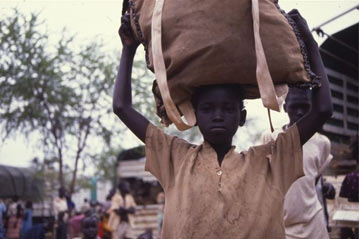Unit plan for ages 9-11 in Language & Literature: Refugee Children Recount their Experiences
Teaching and training materials
Unit plan for ages 9-11 in Language & Literature: Refugee Children Recount their Experiences
-
9 February 2007
-

Thousands of children from Sudan, unaccompanied minors, trekked from their country to Ethiopia and onwards to Kenya in their search for safety and shelter.
© UNHCR/B.Press
UNIT OBJECTIVES
Knowledge
- To understand refugee children's feelings of not belonging
- To understand the notion of community
- To see the application of such feelings to individuals and groups in our own community
Skills
- To perceive the meanings behind a simple story
- To practise creative writing skills
- To practise recognition and attractive use of adjectives
Values
- To avoid stereotyping and excluding people from "our" group (The Party)
- To appreciate the importance of cooperation (The deaf man and the blind man, Tit for Tat).
LESSONS 1 and 2: Refugee children tell their stories
|
||||||||
LESSON 3: A morality story
|
||||||||
LESSON 4: Adjectives
|
||||||||
LESSON 5: Story writing
|

